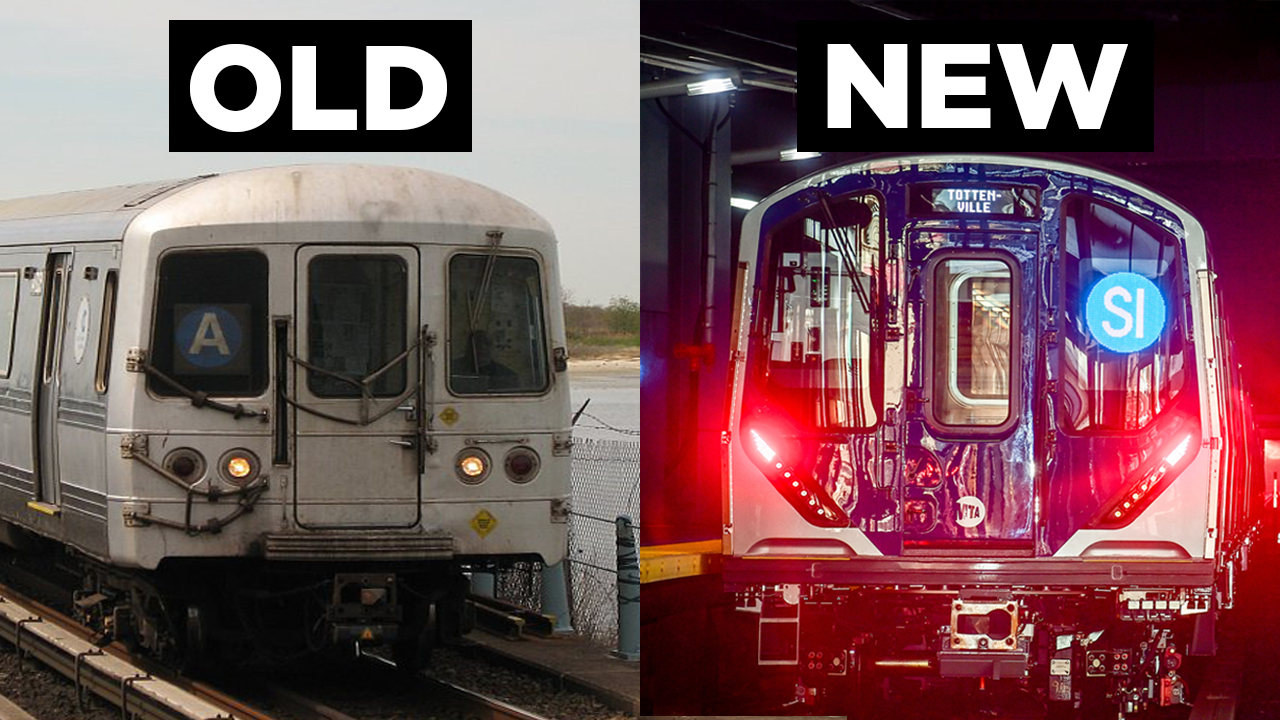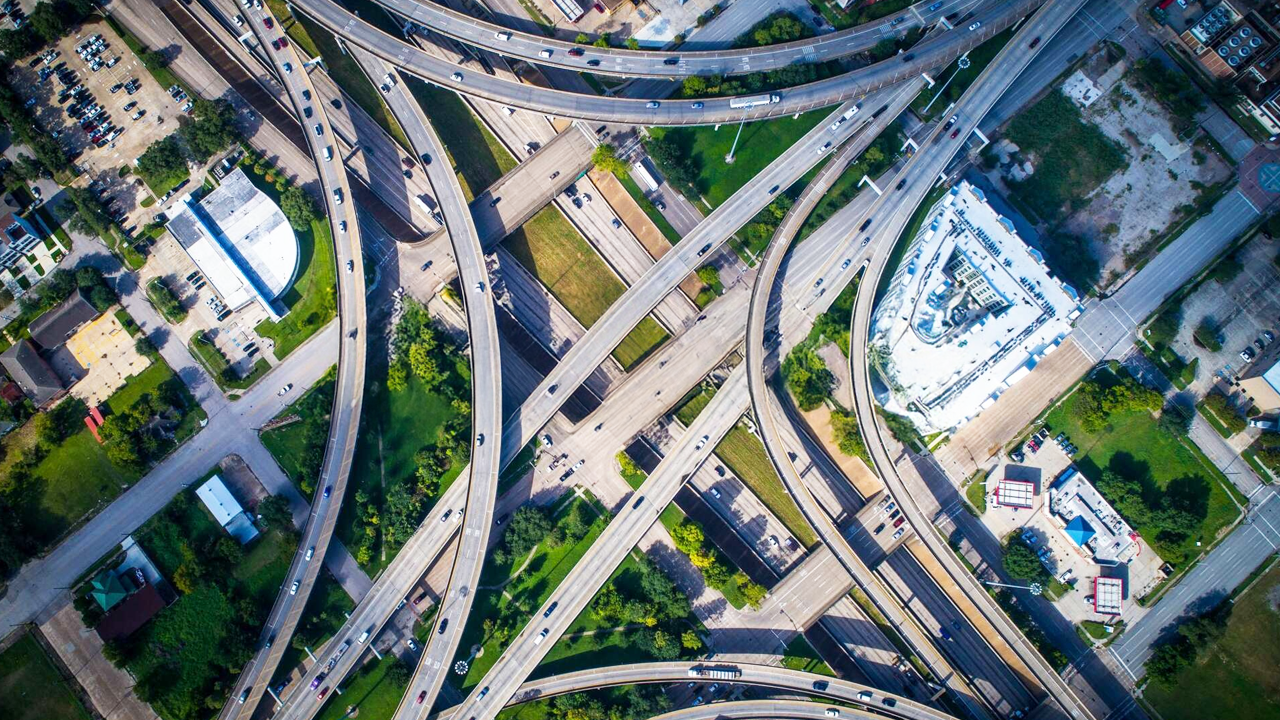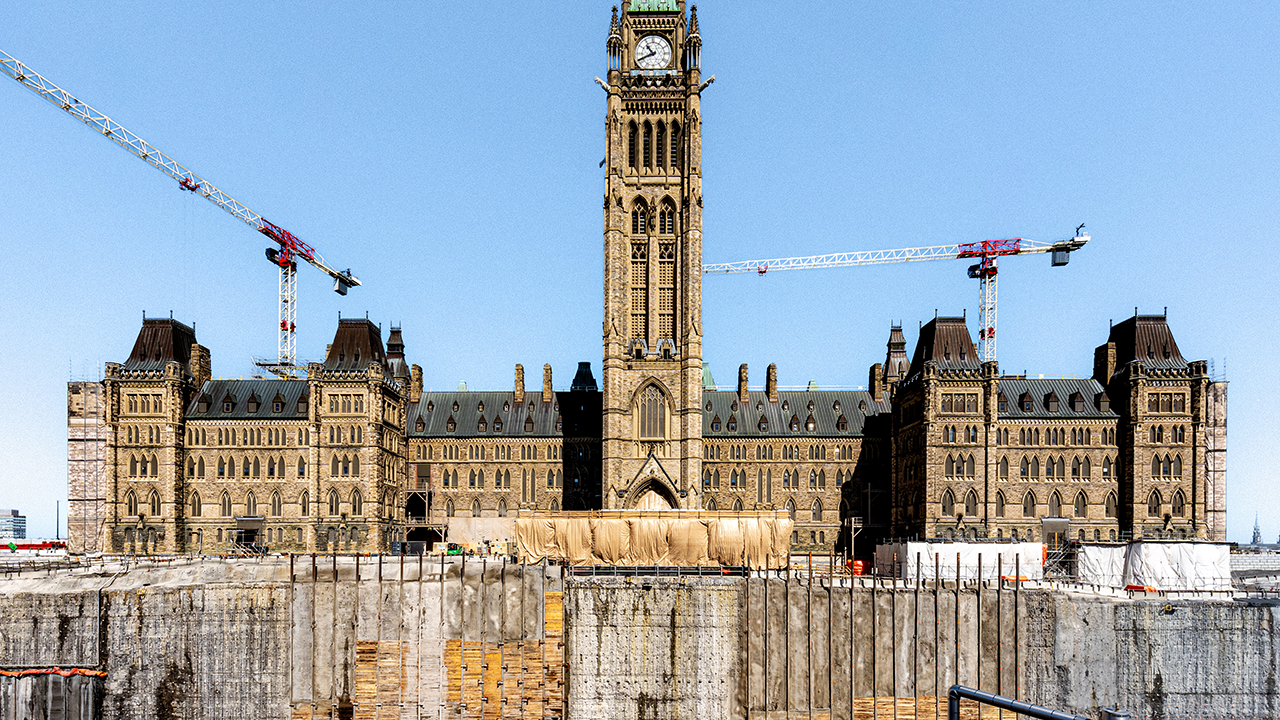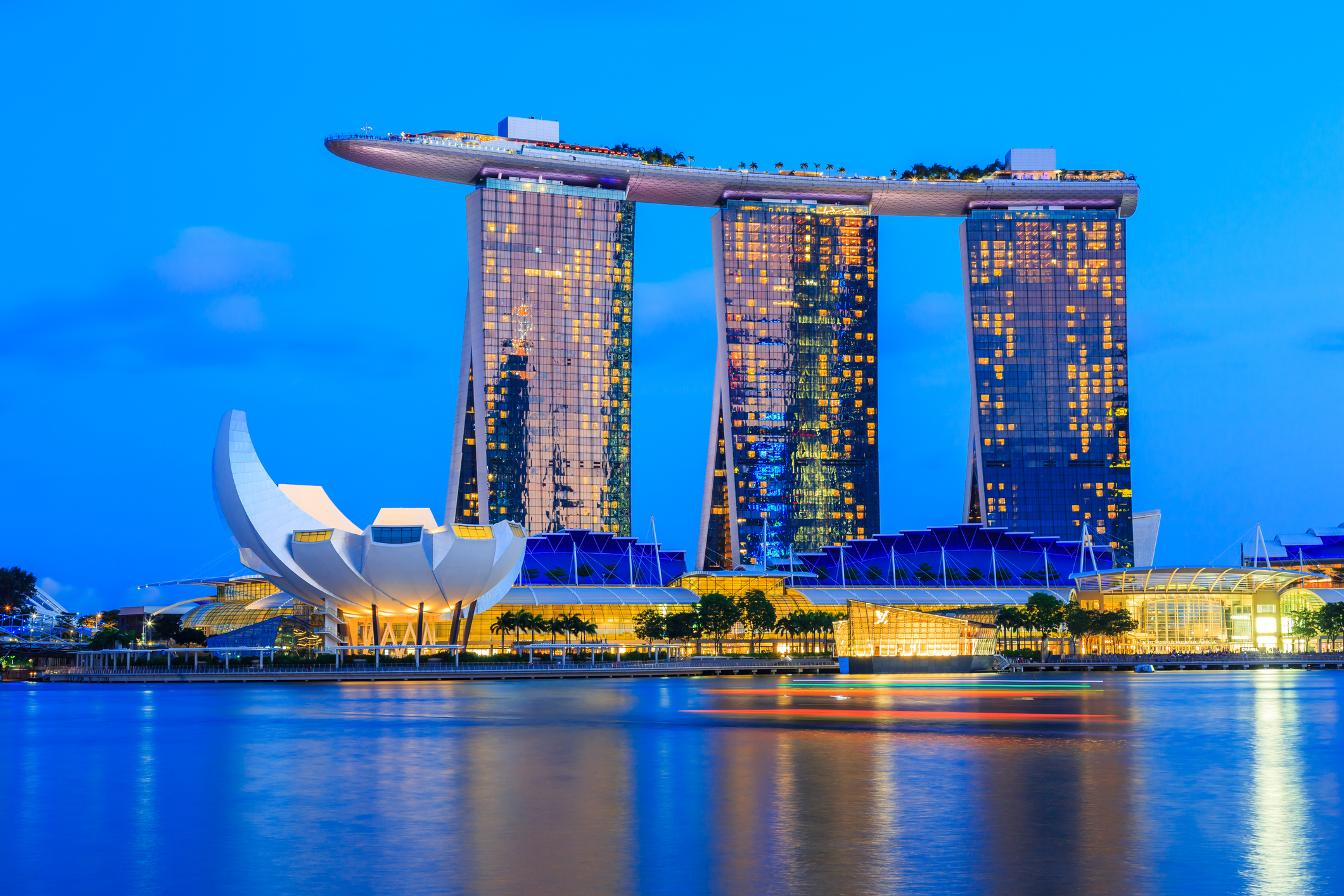How to Build an Arctic Airport
- Youtube Views 567,085 VIDEO VIEWS
Video narrated and hosted by Fred Mills. This video contains paid promotion for Masterworks.
FAR up in the Northern Hemisphere, Greenland is embarking on the biggest infrastructure scheme in its history.
Three airport projects are now underway across a territory that’s covered in giant glaciers and freezing tundra, with only a tiny population.
So, what does it take to construct the runways, terminals and everything else needed for international flights in such an isolated – and cold – location? And why is it happening at all?

Above: Greenland is the coldest country on Earth and the world's biggest island.
Everyone’s heard of it, but how much do you know about Greenland? Yes, it’s that big white block of land we’ve all seen on a map hanging down between Canada and Iceland.
You might think of it as being remote, sparse and more than a bit nippy, without a great deal of civilisation. And sure, temperatures can hit -25 °C, plus it has the lowest population density on Earth.
Aside from that, there’s a lot more to Greenland than many realise. You see, it’s not just a load of ice.
Like the Faroe Islands, it’s an autonomous territory of the Kingdom of Denmark, and humans do live here – about 56,000 of them – mostly in small coastal cities.
Deep freeze
Why not inland? Because the entire centre is covered in the only permanent ice sheet outside Antarctica. It means if you want to travel between these places, the only option is to fly.
That’s right, there are multiple airports in Greenland, including international ones, but they’re small and only serve a handful of destinations.
Only two are big enough to handle jets and neither are close to the capital, Nuuk.
To get there you have to transfer on one of the tiny propeller planes that are used across the island.
Which is where the dilemma is. Greenland wants to become a bigger tourist destination, but that can’t really happen when getting here is a bit of a hassle.

Above: Most of the airports here can only serve small prop planes. Image courtesy of Greenland Airports/Christian Sølbeck.
“The Greenlandic economy is very dependent on fish, and this means that it has a certain kind of vulnerability to it. There is a want to strengthen the economy by building new pillars — one of the pillars being tourism,” Jens Lauridsen, CEO of Greenland Airports, explained.
"In Nuuk, around 60 to 65% of everybody going to Greenland actually goes to Nuuk. And today you will have to fly to another airport, and then you will have to do a domestic flight to get to Nuuk.”
The solution? Build a series of newer, bigger airports that will make this stunning country more accessible.
Sounds simple when you put it like that, but construction of any kind in this part of the world is never straightforward.
The plan
Before we delve into these difficulties, what are Greenlanders getting with these new airports?
Well, first of all, the capital’s airport is being completely overhauled and will become the main hub for international flights from 2025.
Upgrades include more than doubling the runway to 2,200 metres, and a new terminal with apron. It’ll also be equipped with two taxiways, a new control tower and service buildings.
A similar arrangement is happening in Ilulissat – Greenland’s third largest city, which also has an existing airport.
The new airport being built there, alongside the one in Nuuk, will have the same length runway, and the list of other improvements is almost identical.

Above: A rendering of Nuuk's new airport. Image courtesy of Greenland Airports/Zeso Architects.
Lastly, down in the south of the island, the town of Qaqortoq is getting its first ever airport.
With a 1,500-metre runway and capacity for just 200 passengers at a time, it will be smaller than the other two and used mostly for domestic flights.
Those longer runways in Nuuk and Ilulissat will allow bigger planes to land and take off, meaning more passengers from destinations further away.
They’re also being fitted with Instrument Landing Systems that make it easier to land when there’s reduced visibility.
Weathering the storm
In fact, that’s just one of the many challenges pilots can face when trying to put a plane down in this place.
The giant fjords surrounding some airports can cause sudden gusts of wind, low-level fog is not unusual and runways are often covered in snow or frozen entirely. Sub-zero conditions aren’t ideal for construction either.
“The airport [Illulisat] is located 300km north of the polar circle. So you have a very long winter season where it's solid frozen — where you, of course, cannot work on cleaning up the seabed, etc, etc. So, there are a lot of challenges in terms of that,” Lauridsen said.

Above: The atmospheric conditions in Greenland can make it a tricky place for landing aircraft.
What is it like, then, to build on one of the most inconvenient ground types you can imagine — Arctic tundra?
It’s where you’ve got a very cold, barren, treeless landscape on the surface and a layer of permafrost beneath.
This can be as hard as concrete in some places, so when you’ve got to do any kind of excavation, like before laying a runway, it’s virtually impossible to do using normal methods.
By that we mean bringing in some excavators and getting them to dig away happily through the lovely soft soil that most airports are built on.
Booming business
Sadly, it’s not as simple as that here, which is why main contractor Munck Civil Engineering has had to use a strategy normally reserved for tunnelling — blowing the obstacle to bits with explosives.
For the two larger airports, around six million cubic metres of rock had to be blasted away for construction to take place.
That’s more than twice the volume of the Great Pyramid. In Qaqortoq, it was two million cubic metres.
“The majority of the time that we have spent on construction so far has actually been the drilling, blasting and moving of rock,” remarked Lauridsen.
“We have literally blown a mountain away in order to make enough space to get a 2.2km runway.”

Above: One of the many explosions that had to be carried out to clear space for the new runways. Image courtesy of Greenland Airports.
The material was then ground up and used to build the runways and foundations for the buildings and infrastructure. Over in Nuuk, the runway was done in two stages with the southern end constructed first.
When complete, air traffic moved over from the old runway while the northern end of the new one was still being built.
But that’s not the only way the lay of the land has produced problems here. Some of the Ilulissat runway goes into the sea.
That meant removing a thick layer of clay sediment, which then had to be backfilled to avoid settlement over time.
Heavy lifting
To do this, a 200-tonne crawler crane from Liebherr was brought in to handle the dredging, as well as other tasks. These included placing large stones alongside the runway to protect it from the coastal waters.
Crew members had to rely on weekly shipments for parts and equipment, and worked long shifts to stay on schedule.
Because while life in this part of the world might seem laid-back and peaceful, the bitterly cold climate ensures the clock is always ticking.
The winter months are when the mercury drops way below freezing, which makes any kind of construction here impossible, even with your biggest coat on.
Between December and April, work had to stop entirely, and some jobs could only be done during a small summer period.

Above: The crawler crane in action. Image courtesy of Liebherr.
As for when this is all due to finish, like with many large-scale infrastructure projects, there have been some delays. Nuuk’s new airport was initially set to open in 2023, but that had to be pushed back to late 2024.
This was mainly due to COVID-19 and new regulations coming in since the original plan was drawn up. It wasn’t the only complication that came up during the projects’ conception.
“The runway in Ilulissat has unfortunately been a little bit delayed because we have faced some issues construction-wise,” Lauridsen said. “We had 13 weeks where we couldn’t get supplies into the construction site because the water was frozen.
“You can prepare everything but you can’t set the date on when the weather is ready for you to start doing these things.”
Illulisat is now due to complete in 2026 — same as Qaqortoq.
Chinese puzzle
Then there was the issue that came up earlier on. Before it was decided which companies would do the construction, a state-owned Chinese firm bid for the job.
The trouble was, Greenland is a key strategic point for the United States. There’s still a US Air Force base here, which is also part of a large missile defence system.
The idea of Chinese-made airports close to a US military site made things a little tense, and the bid was dropped. Instead, Denmark would help build and fund the projects.

Above: Completion of the airport in Nuuk has been delayed by a year. Image courtesy of Greenland Airports.
OK, so what is the price tag for all of this? In total, the scheme is expected to cost DKK 5BN — around USD $700M.
Qaqortoq has been financed solely by the Greenlandic government, while the other two are a partnership with Denmark, which owns a third of the project.
The money not covered by equity — around half of the cost — has been borrowed from the Danish central bank and the Nordic Investment Bank.
Although it might not sound like much for three airports, for a country the size of this, it’s a lot. That total figure is about 20% of Greenland’s GDP.
But what they could do for the economy in the future is where the potential pay-off is. Currently, foreign tourism brings in almost DKK 2BN per year.
With the new airports close to opening, that amount is almost certain to rise in the coming years.
Breaking new ground
Not long ago, building three major airport projects here would’ve seemed ridiculous. But thanks to extreme construction and big ambitions, this amazing place is about to pull off something extraordinary.
“This is not about building a second airport in Berlin or a third runway in Heathrow. This is about making development possible in a country that will be able to change the economy of the country,” concluded Lauridsen.
It once again goes to show that not many places are out of reach when the people that work in this incredible industry put their minds to it.
This video and article contain paid promotion for Masterworks, you can skip their waitlist here.
Video narrated and hosted by Fred Mills. Additional footage and images courtesy of Greenland Airports, Liebherr, tnt Nuuk, Zeso Architects, Christian Sølbeck and Quintin Soloviev/CC BY-SA 4.0.
We welcome you sharing our content to inspire others, but please be nice and play by our rules.








